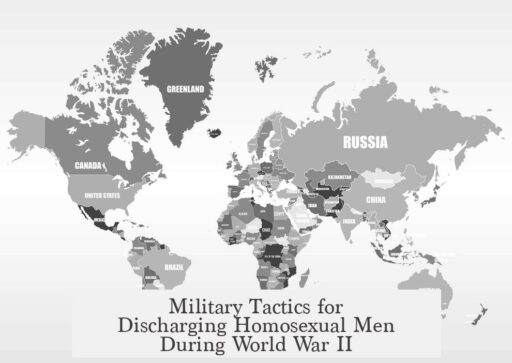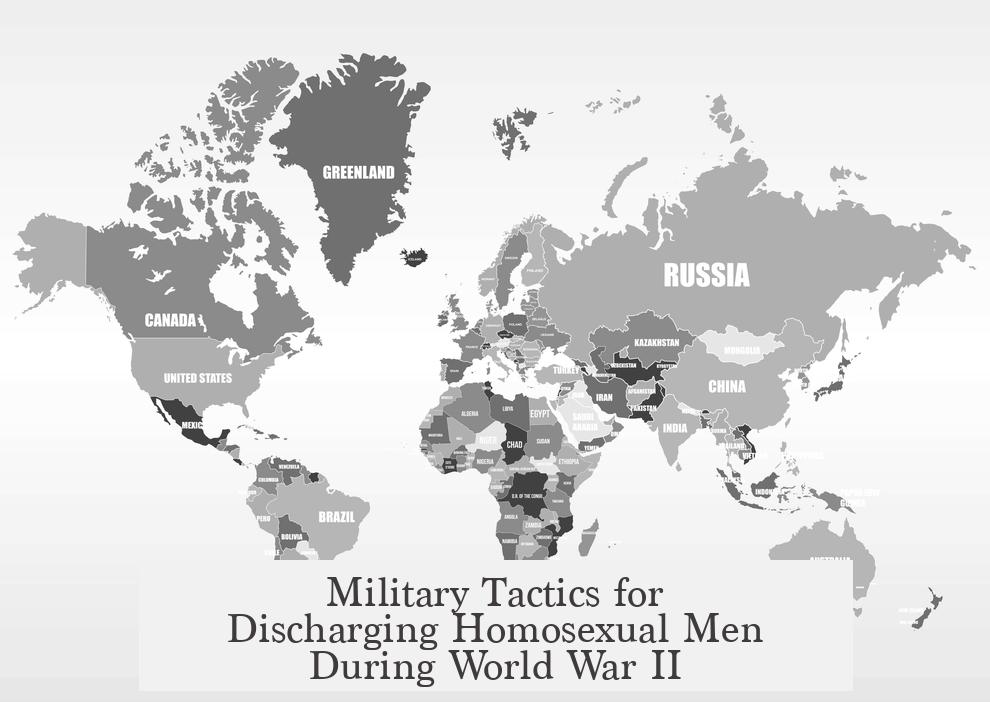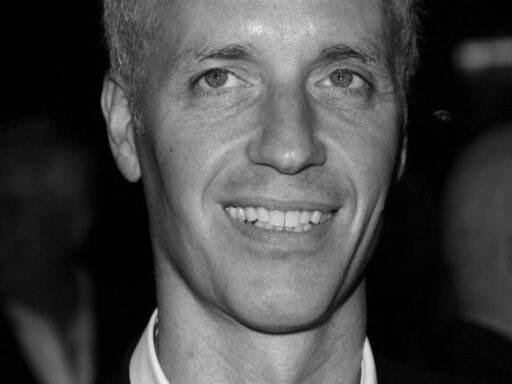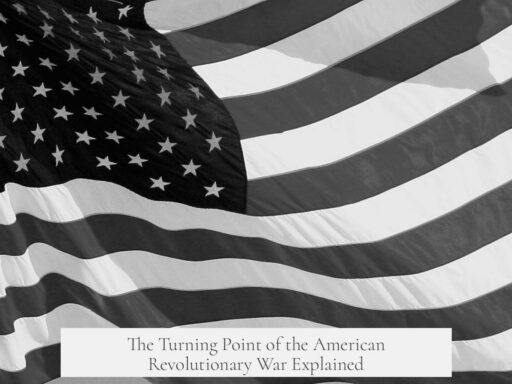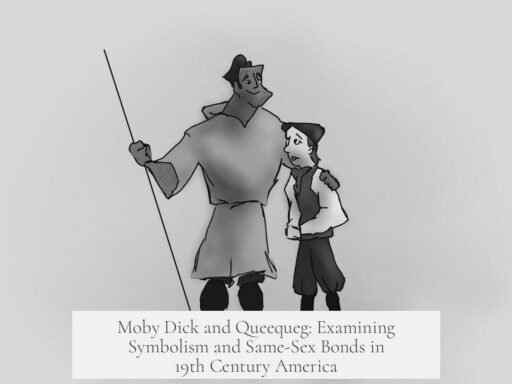The military’s efforts to weed out homosexual men during World War II were inconsistent and often ineffective. Medical boards rarely identified queer recruits, as many focused on physical fitness rather than sexuality. Regular medical inspections sought signs tied to homosexual activity, but many sailors passed unnoticed, especially with support from comrades.
Initially, recruitment medical boards theoretically screened out homosexual men. In practice, these boards seldom weeded out queer recruits. Many medical examiners viewed same-sex attraction as a moral rather than medical problem. They believed discipline and strict routines would correct such “failings,” reducing the need to exclude recruits solely on sexuality.
Medical boards rarely asked about sexuality directly. Instead, examiners looked for stereotypical signs of homosexuality, which they often misunderstood or overlooked. For example, Terry Gardener, a known drag artist, deliberately acted effeminate to fail his medical exam but was still accepted and served as a cook. The only documented rejection for sexuality alone was Quentin Crisp, whose dyed hair was perceived as proof of “sexual perversion” by a board doctor.
Once enlisted, military medical services took a more active role in identifying homosexual men. Naval medical officers conducted routine health inspections focused heavily on sexually transmitted diseases (STDs). STDs were common, and syphilis was of particular concern because its presentation varied by transmission method. Medical staff were instructed to look for signs indicating infection through anal intercourse as evidence of homosexuality.
Unusual symptoms such as diarrhea could prompt further investigation for homosexual activity. Medical officers also played a role in confirming cases of homosexuality during legal proceedings, such as courts-martial, especially when sailors were caught in compromising acts.
Psychiatric services increasingly considered homosexuality a psychological issue during WWII. However, limited resources and experience meant psychiatrists often did not diagnose queer sailors unless the men disclosed their sexuality explicitly. Thus, psychiatric intervention was rare except in obvious or admitted cases.
Social dynamics aboard ships complicated how homosexuality was policed. Sailors often tolerated queer comrades if they performed well in their duties. Acceptance was common among shipmates who valued camaraderie over moral judgments. Many queer men used humor or played up stereotypes to diffuse tension and create space for themselves.
- Drag performances, known as “Sods Operas,” were popular aboard ships. Queer sailors performing drag were often shielded by their peers.
- Shipmates protected queer sailors by covering up indiscretions, partly to mock naval authorities and protect the ship’s reputation.
- However, relationships crossing rank lines faced disapproval, viewed as favoritism that could disrupt discipline.
- Some officers pushed harder to punish queer sailors, especially when scandals arose or assaults were reported.
Officially, homosexuality was illegal and punishable by imprisonment following court-martial. Despite this, actual prosecutions were rare. More often, queer sailors were discharged—either medically or for “services no longer required.” Honest admission of one’s sexuality sometimes helped avoid harsher punishment and combat duties. Some men sought discharge to pursue civilian careers, but these requests could be denied if the Navy deemed the sailor’s contributions valuable.
For instance, Dennis Prattley, a sailor known for his drag act, tried multiple times to obtain a discharge by revealing his sexuality. Each attempt failed because his performances boosted morale, illustrating the Navy’s practical considerations outweighed rigid enforcement.
Many queer sailors successfully passed unnoticed by maintaining discretion and preserving trust within their crews. Safe sexual practices and careful conduct were crucial to evading detection. Unless reported or caught in compromising situations, queer men could serve without disruption.
| Method | Effectiveness | Notes |
|---|---|---|
| Medical Boards | Low | Focused on physical health; rarely questioned sexuality directly. |
| Medical Inspections for STDs | Moderate | Checked for signs of homosexual transmission but limited by stigma and medical knowledge. |
| Psychiatric Evaluation | Limited | Few diagnoses unless handed self-report of homosexuality. |
| Peer Scrutiny | Variable | Acceptance common; some protection by shipmates. |
| Court Martials and Discharges | Infrequent prosecution | Discharges preferred over punishment; morale considerations often prevailed. |
The military’s approach during WWII mixed medical procedures, legal measures, and social pressures to identify and remove homosexual men. However, enforcement was uneven and often pragmatic. Peer acceptance and limited investigative tools allowed many queer sailors to remain in service.
- Medical boards seldom screened out recruits for homosexuality.
- Routine medical inspections targeted STDs as indirect indicators.
- Psychiatric services rarely intervened without self-admission.
- Shipmates often accepted or protected queer sailors.
- Discharge without trial was more common than court-martial.
- Many queer sailors passed unnoticed by maintaining discretion.
How did medical boards screen for homosexual men during WWII?
Medical boards rarely weeded out queer recruits. They mostly focused on physical health and did not routinely ask about sexuality. Often, they relied on stereotypes they barely understood, allowing many queer men to pass through initial screening.
What role did medical inspections play in identifying queer sailors aboard ships?
Regular medical inspections targeted sexual health, focusing on STDs linked to homosexual activity. Officers watched for signs like unusual symptoms of syphilis and other indicators to identify and report suspected homosexual behavior.
How did shipmates influence the treatment of homosexual sailors?
Shipmates often tolerated queer sailors if they were good at their jobs. Some used humor or drag performances to ease tensions. Many helped cover up homosexual acts to protect the crew’s reputation and avoid trouble from authorities.
Were there psychiatric services involved in detecting homosexuality in the military?
Psychiatry viewed queerness as a psychological problem, but psychiatrists rarely diagnosed it unless sailors mentioned it directly. Limited experience and resources meant many queer men went undetected by psychiatric services.
What happened to sailors found or suspected to be homosexual during WWII?
Instead of court-martials, many were discharged quietly with medical or administrative excuses. Admission of queerness could sometimes help avoid combat or lead to civilian opportunities. Harsh punishments were rare but still possible.
